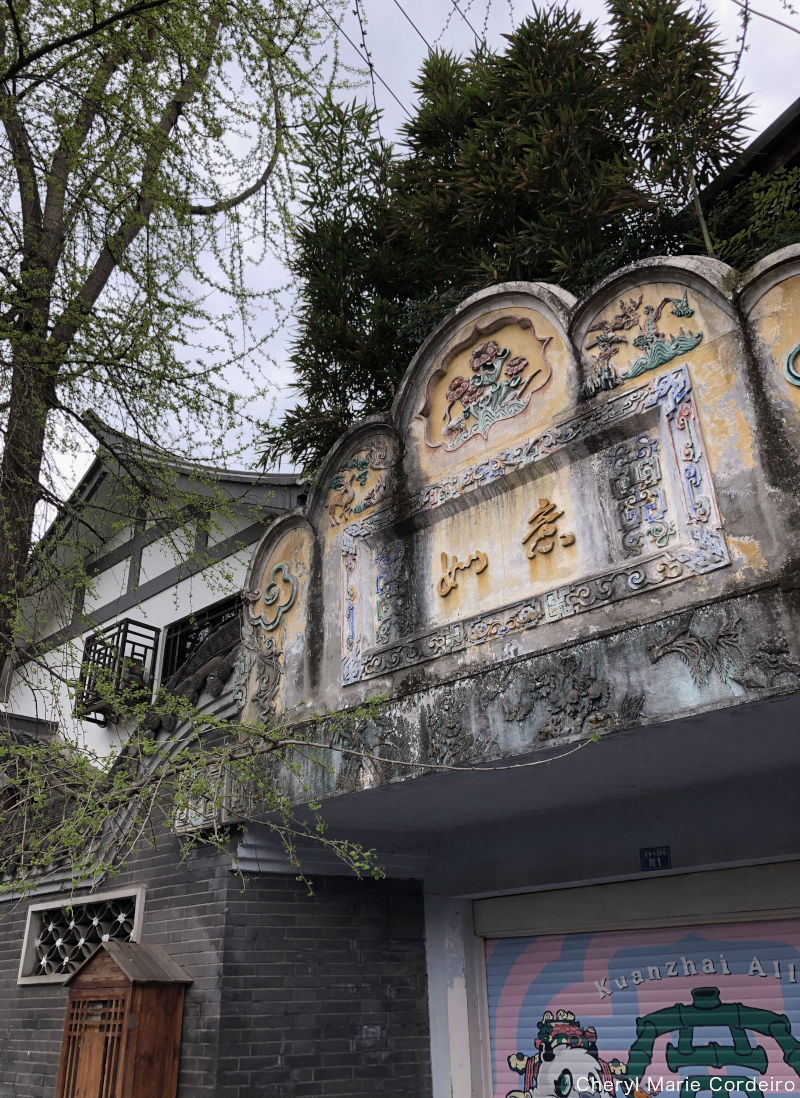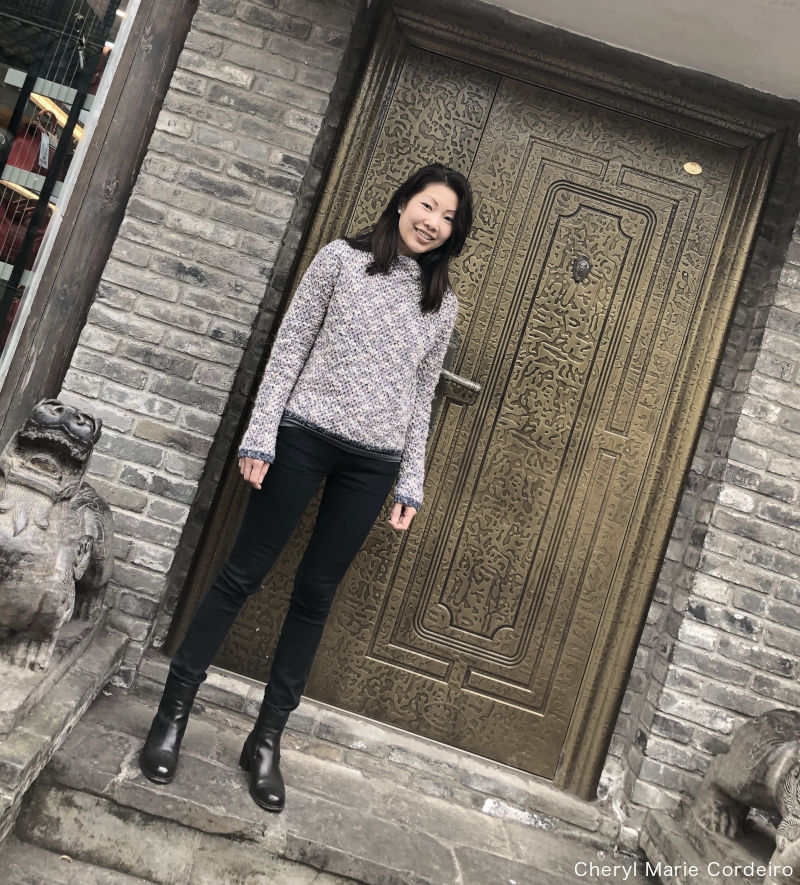At Kuanzhaixiangzi Alley, Chengdu, China.
Text & Photo © CM Cordeiro 2019
I was expecting a Yuyuan street experience like that of Shanghai 2011, when I thought to visit Kuanzhaixiangzi Alley in Chengdu, China. But this was a different adventure of sorts. Cozy yet vibrant, visitors are greeted with beautiful architecture throughout the alleys. Located in proximity to Tianfu Square and Renmin Park a taxi ride will take just about ten minutes to Kuanzhaixiangzi Alley and what I think is one of the more scenic (historic-) urban areas in Chengdu.
Kuanzhaixiangzi Alley literally translates into English to mean, “wide and narrow” streets. There are 3 alleys that run parallel to each other whose architecture date back to the time of the Qing Dynasty. What makes this area interesting is the very juxtaposition of name (wide and narrow streets), as well as living activities (old world tea made from hand roasted tea leaves, and new world Starbucks coffee). Modern living runs parallel with ancient architecture. Computerized billboard signs in neon flash stock exchange numbers, news and advertisements to passers-by. As I stepped out of a house that showcased an impressively carved five-clawed Imperial Dragon sculpture, I stepped right into the square of the global coffee chain, Starbucks. Apparently, a Starbucks coffee chain opens every 15 hours in China, where they plan for 5000 stores by 2021 [1]. Even if discreet and embedded in Qing Dynasty architecture, Starbucks is difficult to miss if you’re taking your rounds along these streets. Reached your year’s quota of healthy warm cups of chrysanthemum flower tea? Why not calibrate that with some cold Frappuccino topped with whipped cream and chocolate sauce?
Chengdu has a lively food and drink culture. A lot of its culinary heritage, and how food is cooked and served can be observed and tried along these streets. Here, visitors can find savoury steamed rice rolls served in soya sauce, fresh made spring rolls and sweet red bean steamed buns. Roasted hare, and boiled pig trotters are also available as convenience foods to pack-and-go.
As China is large, domestic tourism is not unusual. Many Chinese who are not native to Chengdu can be seen exploring these streets with mobile phones in hand, capturing memories. I saw a child about the age of seven, take a picture of his mother using a mobile phone. His mother looked picture perfect. Elderly folk who live in the area seem oblivious to the flux of visitors, they continue with their daily living of having tea in the quieter corners of these streets. The best time to visit Kuanzhaixiangzi Alley, I was told, would be about between lunch and afternoon tea time, when locals too find it perfect to stroll the streets or sit to have tea.
I spent about an hour and a half walking through Kuanzhaixiangzi Alley, stopping at tea houses and shops alike. On my way out, I found the surrounding streets to be equally interesting, with shops likewise filled with hand crafted goods and local foods. To that end, sitting down to a good dinner and a cup of Zhu Ye Qing (green bamboo green tea) at a nearby restaurant makes for the perfect capping to the day’s exploration activities.






Stepping stones into the opera house at Kuangzhaixiangzi Alley.

Gorgeous architecture.




Panda food.

Old world charm, together with new world living.
Culinary scene at Kuanzhaixiangzi Alley
Chengdu has a vibrant food culture as illustrated in this short video from Kuangzhaixiangzi Alley. A recognizable export from Chengdu is Sichuan spices.

Steamed ricecake rolls.


Savoury soya beancurd in soya sauce.

The making of Sichuan springrolls. In Singapore, this would be a variation of the Singapore Popiah.
Roasting Zhu Ye Qing (竹叶青), Green Bamboo green tea leaves. This variety of green tea is from Emei Shan (峨嵋山, Emei mountain) in Sichuan [2].
Reference
[1] LaVito, A. (2017). Starbucks is opening a store in China every 15 hours, CNBC, 5 Dec. 2017. Internet resource at https://www.cnbc.com/2017/12/05/starbucks-is-opening-a-store-in-china-every-15-hours.html. Retrieved 31 March 2019.
[2] TTG (2019). Brief Introduction to Zhu Ye Qing (Green Bamboo) Green Tea, Top Tea Garden. Internet resource at https://www.topteagarden.com/chinese-tea-leaves/green-tea/zhu-ye-qing-green-bamboo/. Retrieved 31 March 2019.
